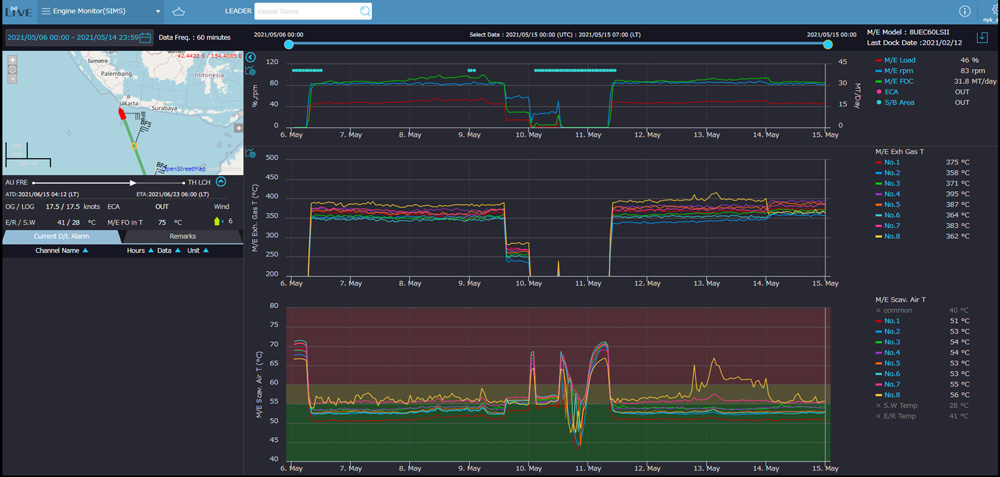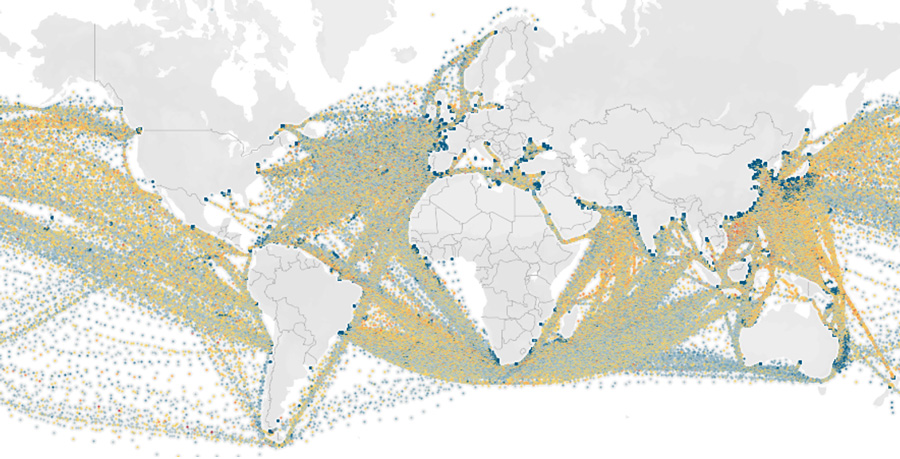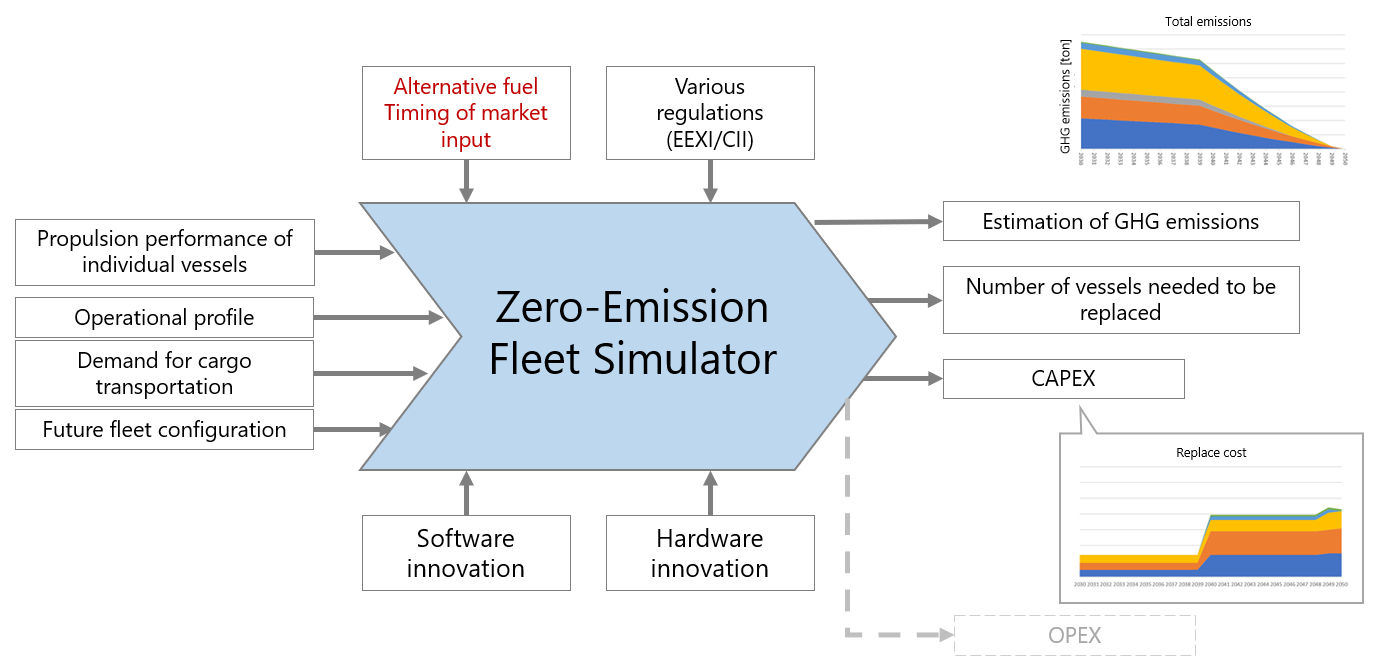Data Utilization
October 3, 2022
Collaboration with business divisions through data utilization
MTI utilizes a wide variety of data to promote decarbonization, operational efficiency, and safe ship operations. In 2008, we became the first company in the industry to collect ship IoT data by introducing the Ship Information Management System (SIMS), a ship performance monitoring system, on NYK-operated ships. The collected big data is visualized in the applications like “LiVE: Latest Information for Vessel Efficiency” and support business decisions.

Image of LiVE application screen
In recent years, the opportunity for using “AIS: Automatic Identification System”*1 data has increased dramatically with the development of satellite communication technology. We have built a database to accumulate AIS data and has created an environment that enables us to promptly provide the necessary AIS data in response to the needs of NYK business divisions. As a result, AIS data is now being utilized in a variety of ways, including the analysis of market conditions, competitors and optimal voyage routes and so on.

Example of global ship tracks of bulk carriers
Taking advantage of our various operational data and know-how in data utilization, we are also working to optimize ship allocation and voyage schedule planning, thereby contributing the improvements of profitability and operational efficiency. Recently, we have also been actively utilizing the data to decarbonize our fleet, such as the effectiveness verification of energy-saving devices using actual sea and meteorological data, the creation of fleet operation profiles, and the simulator of GHG emission reductions.

Outline of GHG emission simulator
We aim to leverage the strengths of the NYK Group, and work closely with business divisions to promote an issue identification, data analysis, solution proposals, and its penetration into daily operations.
(Writer: Yuta Kitayama)
*1 Under the International Convention for the Safety of Life at Sea, all passenger ships, international vessels with over 300 gross tons and non-international vessels with over 500 gross tons are required to implement this equipment, mainly to prevent collisions.
Contact
For additional information about this, please contact us by our inquiry form.
